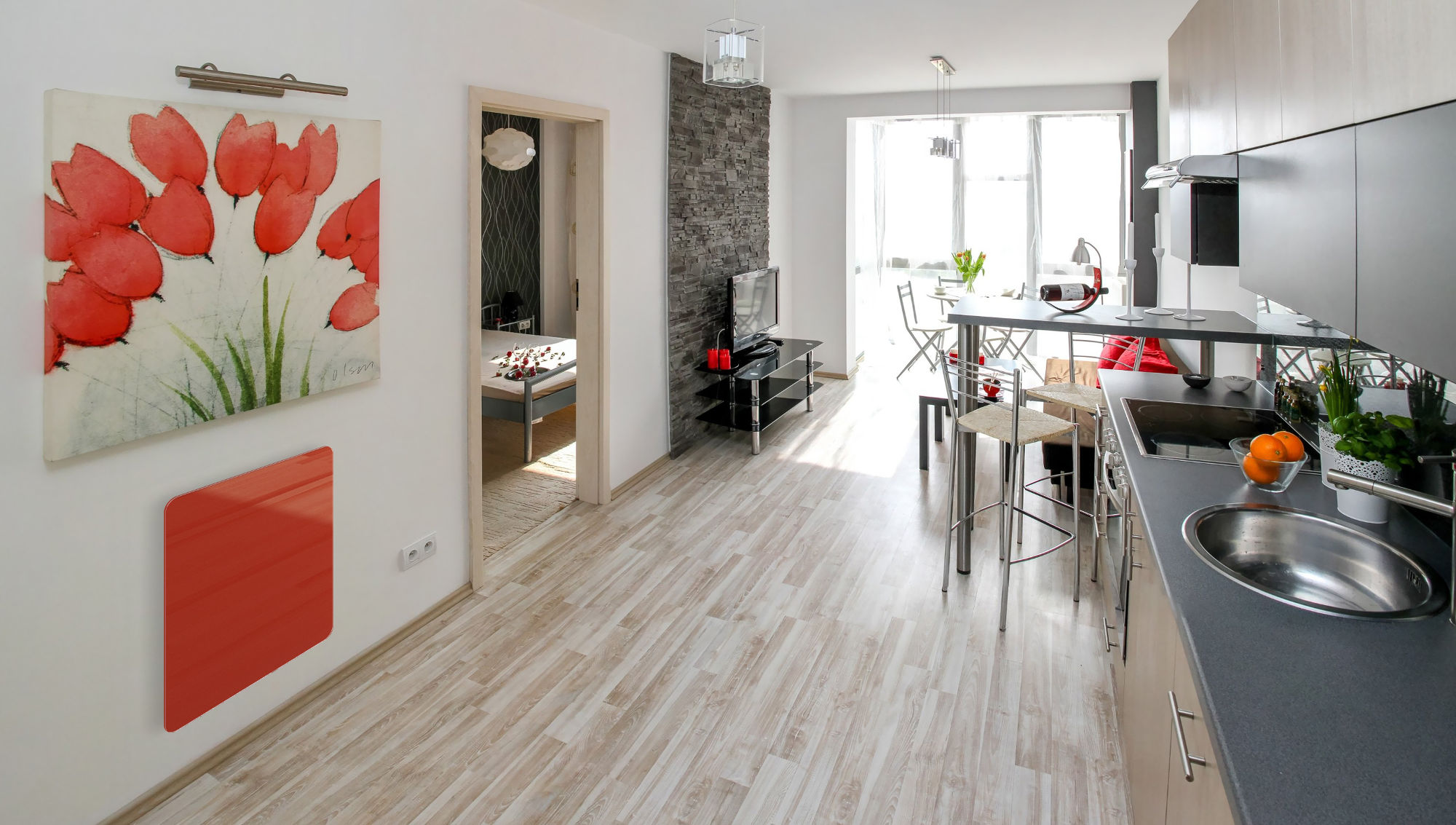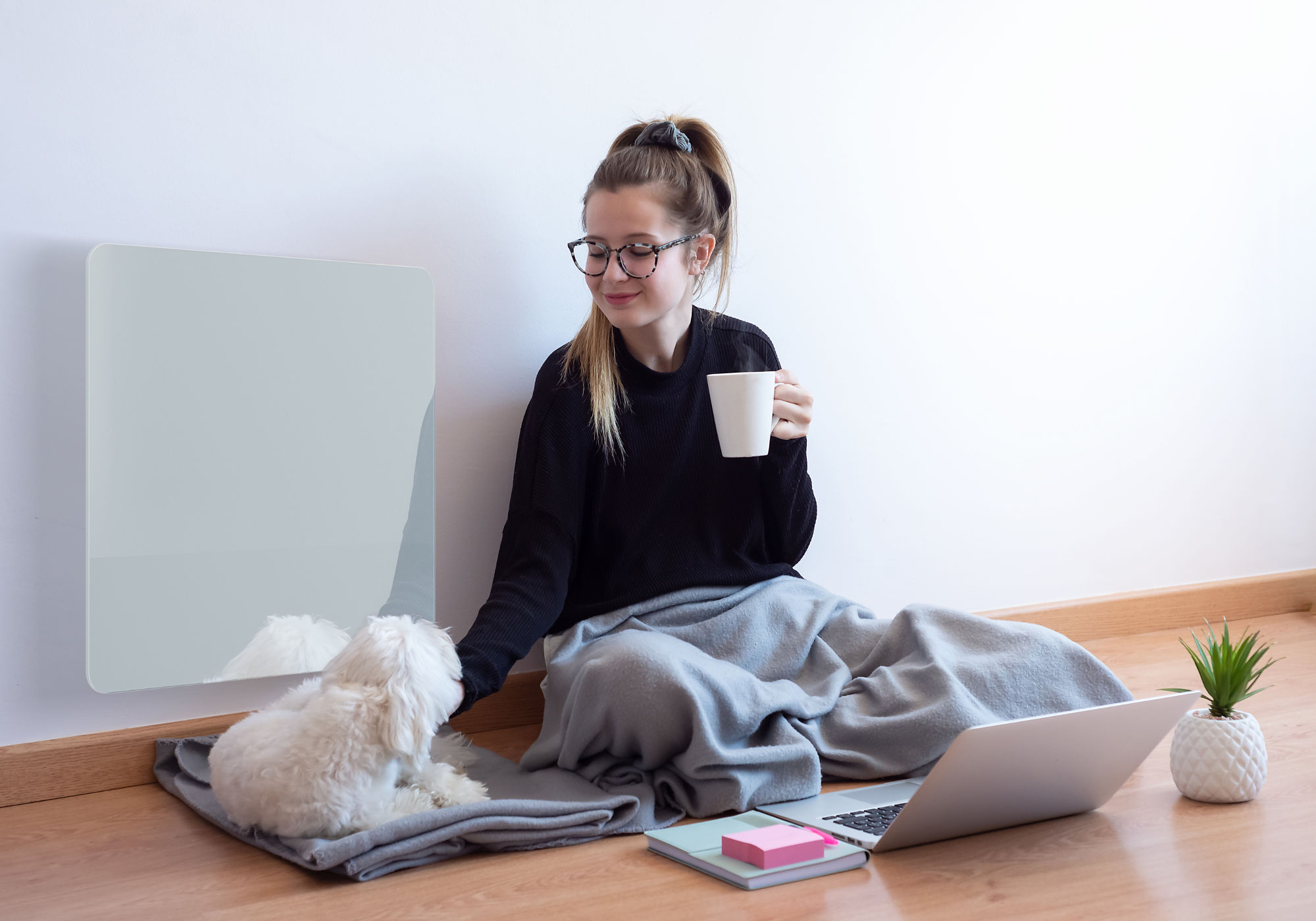
Over the years, several comparisons have been made among Celsius and Fahrenheit technologies and other traditional and latest generation heating systems.
Here are some extracts from the document “The use of infrared rays for heating” created by Eng. Francesco Veronese.
The document shows the comparisons among heating with infrared panels, with heat pump, radiant walls and condensing boiler with low temperature radiators. The study also presents real cases of application of infrared panels.
There is no universal heating system that is effective for all construction applications, but we can compare them on these aspects:
- Savings in consumption (considering the heating system with less consumption as better);
- Energy efficiency (considering the system with the highest efficiency as better);
- Installation and maintenance (considering the system with less maintenance as better);
- Speed (considering the system with faster heating as better);
- Adaptation speed (considering the fastest system to return to the desired heat when temperature changes occur in the environment as better);
- Respect for the environment (considering the system with less emissions as better);
- Well-being (considering the system that provides greater well-being as better).
Savings in consumption
Energy efficiency
Less maintenance
Quick heating
Adaptation speed
Respect for the environment
Living well-being

Conclusions of the comparison
The results of this study show that Celsius and Fahrenheit heating systems are significantly better than heat pumps and combustion heating systems, on 6 of the 7 points considered.
Savings in consumption
Systems with radiant surfaces powered by an electric source (infrared and heat pumps) use less and less energy than combustion systems (methane, LPG, diesel); they are also exempt from the annual / biennial fixed costs imposed by law for the analysis of boiler fumes. Furthermore, the consumption of Celsius and Fahrenheit is lower than even heat pumps, especially at cold outside temperatures.
Energy efficiency
The energy efficiency (i.e. the amount of heat generated with the same power Wh) is higher for Celsius panels, followed by Fahrenheit, which both have a patented ultra-performance technology. This means that these two types of panels have the ability to heat more cubic meters with less energy and therefore they have a lower consumption.

Installation and maintenance
The Celsius and Fahrenheit infrared system for heating combined with a heat pump for domestic hot water (DHW) and air conditioners for summer cooling, costs less than a radiant system powered by a heat pump, integrated with dehumidification systems and controlled by regulation distributed in each room or by zone. For example, a house with a floor area of 100 m2 can consider the following expense items:
| Celsius / Fahrenheit heating (7 rooms) | € 6.700 |
| Heat pump for DHW 250 liters | € 3.000 |
| Wall air conditioners for 2 bedrooms and living room | € 3.000 |
| TOTAL | € 12.700 |
| Heat pump 80 € / m2 for laying underfloor panels, pipes, manifolds, boxes, installation of an air-water heat pump with inverter technology for heating, cooling and domestic hot water production in combination with accumulation 04 M - Rossato Grop and other € 300 for an accumulation of DHW | € 14.300 |
| Room-by-room regulation system | € 700 |
| Dehumidification system | € 2.800 |
| TOTAL | € 17.800 |
In this calculation the heat-pump yearly maintenance required by law is not considered.
The life span of a boiler is 10/15 years, for a heat pump it is declared to be about 15/20 years (25 for geothermal pumps), while for the heating pipes embedded in the radiant surface it exceeds 30 years. It should be considered that, for high insulation energy classes, heat pumps are subjected to reduced stresses which increase as insulation decreases.
Inside the machine there are compressors, screws, gaskets which, over time, reduce the performance of the machine or can cause breakdowns.
The infrared panels have no moving parts subject to wear, the duration is more than 50 years, they do not need any maintenance.
Furthermore, it must be considered that a system with infrared panels and a heat pump only for domestic hot water (DHW) costs 10 to 20% less than a floor heating system with heat pump (air and water) used also for DHW, and that the first option (Celsius/Fahrenheit panels + DHW system) does not need any maintenance costs during its life.
Finally, it is possible to combine all the systems of the house running on electricity with a photovoltaic system. Heating, cooling and domestic hot water production can draw energy from renewable sources in order to achieve complete energy independence. The integration with a photovoltaic system, depending on the area, can lead to a reduction in the electricity bill of up to 80%.

Speed
Intended as the ability to reach the desired level of comfort starting from a cold room.
The radiator systems, in this field, are very performing; especially for those who only turn on the heating once they get home in the evening.
This behavior, however, apart from making the walls and plaster of the houses suffer, is comparable to driving a car starting from the traffic lights, always revving to reach cruising speed in a short time: consumption is high as is the wear of the car.
Radiant systems are slower, but use less energy and are therefore less stressed over time, also for this reason they have a much longer useful life than boilers.
Adaptation speed
Adaptation speed refers to the speed of returning to the desired heat when temperature changes occur in the environment (example: opening a door, opening a window, etc.).
The speed of adaptation of the infrared panels Celsius and Fahrenheit (which heat the walls and transform them into radiant surfaces) is much higher in comparison to convection heating systems (which heat the air). In fact, when a door is opened in a room, the hot air tends to escape immediately, while the walls take a long time to cool down, so the Celsius and Fahrenheit panels are faster and use less energy to return the room to the desired temperature.
In addition, the Celsius and Fahrenheit infrared irradiation systems have the regulation system directly on board, so the tracking of the heat request is instantaneous and punctual. This means that, if the environment were to undergo a rise in temperature, due to external factors (for example a ray of sunlight entering through windows, people, lights, etc.), the panels adapt immediately and decrease the use of energy to maintain the desired temperature.
The control systems of the heat pump systems must control the heat pump, the solenoid valves and the circulation pumps, with an evident delay in following the daily request. This requires that the programmable thermostats are positioned in every room, because in the event that they are placed in a single room that controls an area, a temperature change in another room is not automatically detected with waste of energy and discomfort for people.
Celsius and Fahrenheit infrared systems are therefore more flexible than systems with zone control: heat pump, zone valves and liquid circulation pumps. This translates directly into a better well-being and energy savings.

Respect for the environment
As previously mentioned, electrical systems, unlike combustion systems, do not produce emissions into the atmosphere in the place where they are installed (combustion gas, NOx, CO2, fine dust PM10, PM2.5).
Celsius and Fahrenheit using less energy, the overall production of CO2 equivalent is reduced compared to traditional systems and to the supply with low temperature gas boilers.
Then considering the entire life cycle of a product: production, use, disposal for end of life, the Celsius and Fahrenheit infrared systems produce less CO2 equivalent, being simpler systems to produce and 100% recyclable.
Wellness
For this aspect, there are no calculation formulas other than those required by law for ambient humidity and temperature.
The well-being given by irradiation systems is subjectively superior to other systems; structures observed by people especially with asthmatic problems have found greater well-being given by:
- no dust perfume / odor typical heating of radiator systems;
- warm feet;
- fresh air;
- pleasant warmth.
The C-type infrared wave (long wave), emitted by the Celsius and Fahrenheit infrared panels, is the most natural radiation that exists in the world as it is emitted by the sun and by any hot body around us.
It is used in physiotherapy and has no side effects, on the contrary it provides a subjective feeling of well-being.
Celsius and Fahrenheit infrared heating systems were compared with low temperature heat pump powered radiant systems in two twin apartments.
The result was that, starting from cold environments, the infrared reached comfort more quickly.



